NACE Journal / Fall 2024
Many organizations invest in internship programs as a means of attracting and building connections with prospective employees. In fact, employers cite internship programs as among the most effective means they have for recruiting early career talent and work hard to convert their interns to full-time hires.
To drive conversion, employers carefully craft their programs to include a range of offerings—the type of work interns perform; supports, such as employee resource groups and mentors; activities designed to build connections between the organization and interns and among the interns themselves; and salaries and benefits, including relocation assistance.
In terms of benefits, planned social activities and paid holidays have been provided by more than half of responding organizations over NACE’s last three benchmark surveys. In addition, more than half have reported offering relocation assistance.
Overall, analysis of results from NACE’s 2024 Internship and Co-op Survey suggests that most benefits have a positive effect on conversion rates. Here, we look at how relocation assistance, in particular, correlates to better conversion rates. In addition, the data suggest that such assistance may impact the quality of the cohort as well as its diversity.
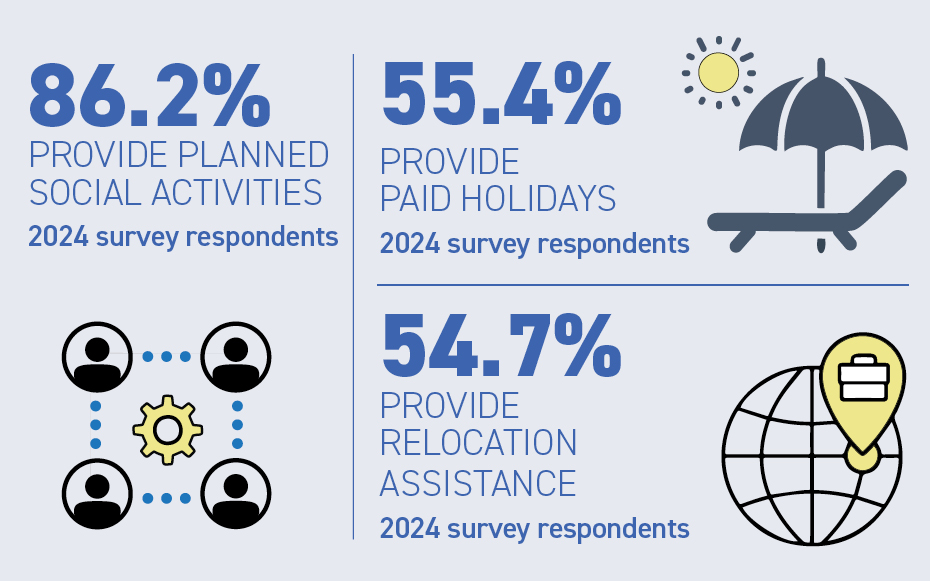
What Is Relocation Assistance?
Among respondents to NACE’s 2024 survey, most provide their interns with a lump sum for housing expenses, based on a cost-of-living analysis of the job site or on the length of the program. The support is most commonly provided to interns who are beyond a 50-mile radius of the job site.
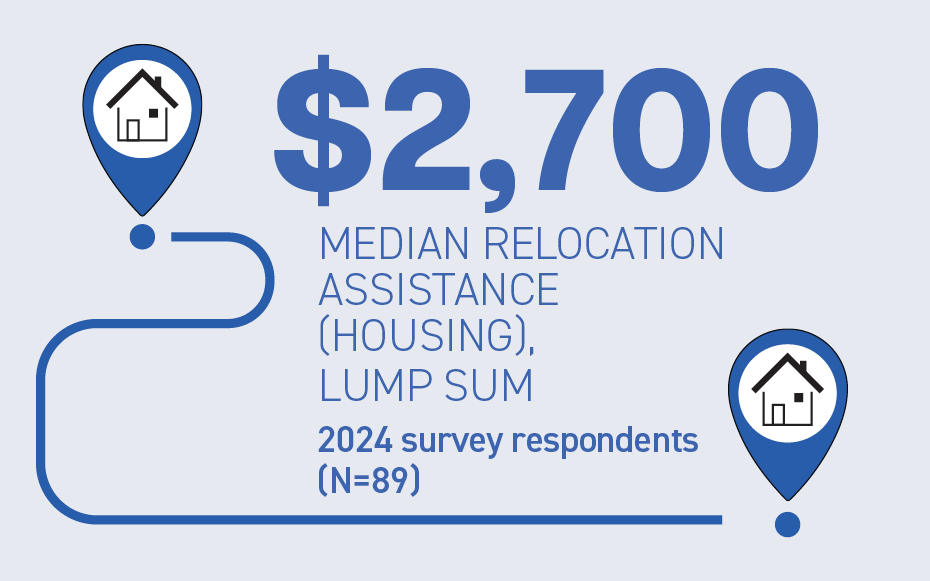
For most, providing relocation assistance is a means to achieving a better pool of applicants as it removes a barrier for students who have to relocate for the position.
Many organizations that do not offer relocation assistance cite budget constraints, while others say they hire interns locally.
Relocation Assistance as a Conversion Driver
As Figure 1 illustrates, according to results of the 2024 survey, organizations that offer relocation assistance converted an average of 53% of their interns to full-time hires. In comparison, organizations that do not provide such assistance converted about half.
In addition, nearly two-thirds of organizations providing assistance rated themselves as very/extremely effective in converting interns, compared with about 36% of those not providing it. (See Figure 2.)
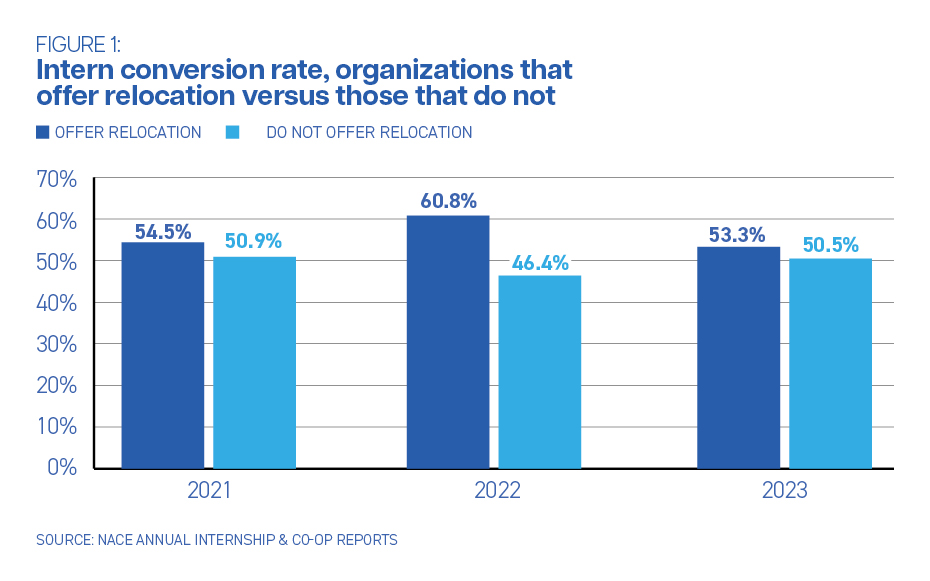
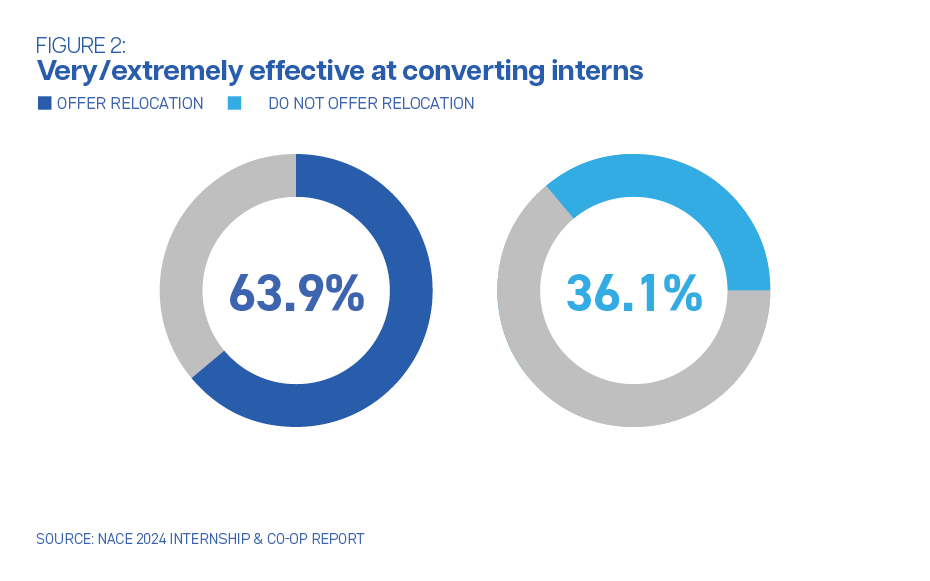
The Effects of Relocation Assistance on the Intern Cohort
Does relocation assistance have an effect on the intern cohort itself? Results suggest that it may.
First, more than three-quarters of respondents to the 2024 survey said that relocation assistance yields a better applicant pool.
In fact, as Figure 3 illustrates, there is a wide gap in the average offer rate between organizations with and without relocation assistance, perhaps as a result of that better pool.
Moreover, there appears to be a connection between relocation assistance and the diversity of the intern cohort, notably among Black and Hispanic students. (See Figure 4.)
In addition, more than half of the organizations providing interns with assistance rated themselves as very/extremely effective at recruiting a diverse cohort, far exceeding those who don’t provide it. (See Figure 5.)
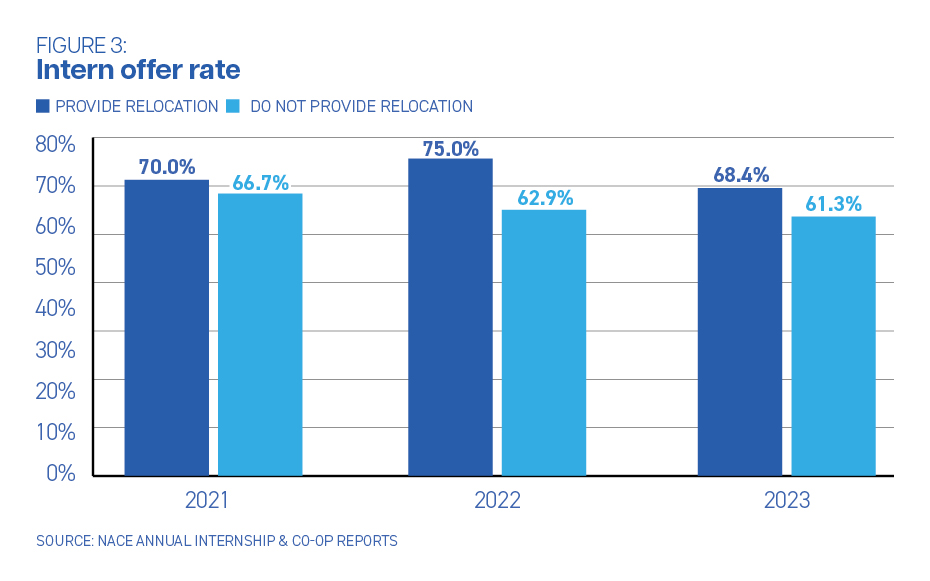
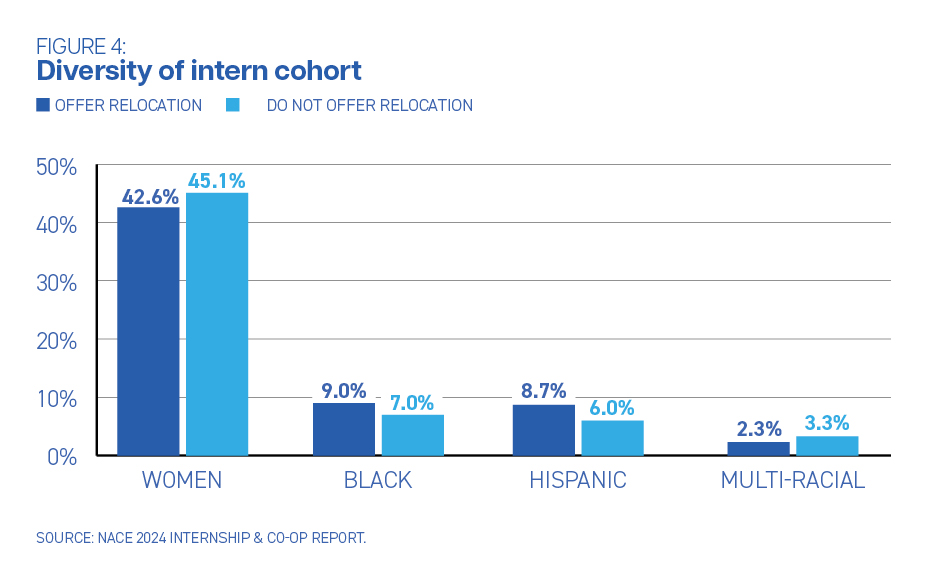
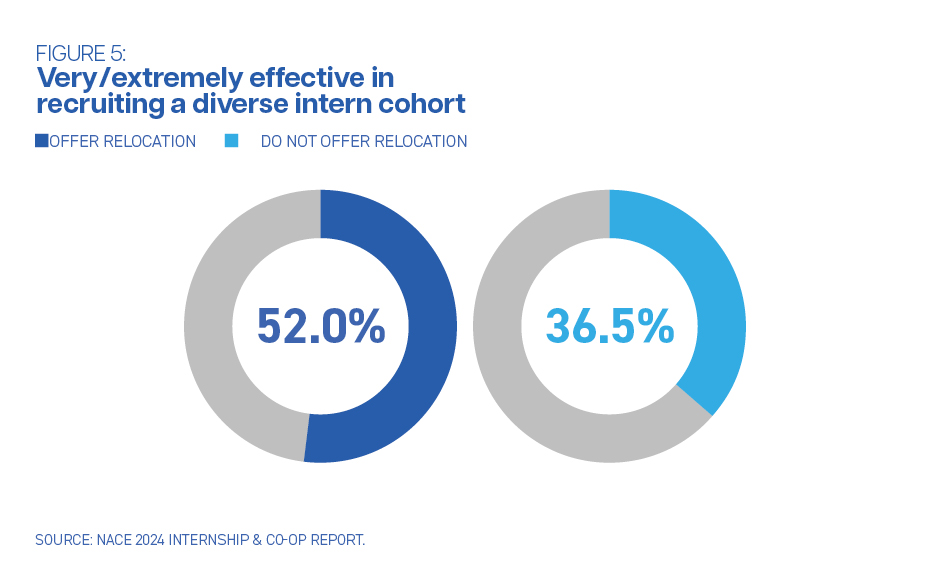
Implications for Internship Programs
The data suggest that organizations invested in using their internship programs to attract and recruit full-time early career talent should consider the role relocation assistance could play for them and how offering this support could enhance their program and cohort. This is particularly true for those organizations that have goals around building a diverse workforce.
Each year, NACE surveys its employer member organizations regarding their internship programs; nonmember employer organizations may also participate. The annual survey, generally conducted from mid-winter through early spring, gathers a range of benchmarks, including recruiting methods; offer, acceptance, and conversion rates; salary and benefit data; and demographics of the intern cohort. In addition to the report, the data are available through a dashboard that allows for customization.
Details about and an executive summary of the 2024 report are available at https://naceweb.org/research/reports/#ics .
For more information about participation, contact NACE Research at research@naceweb.org.






